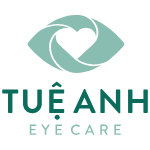MYOPIA - CAUSES AND TREATMENT
Also known as nearsightedness, myopia is one of the most common refractive errors. It is among the top reasons for vision decrease in adults under 40, with an alarming rate of patients getting prescribed with it recently - especially among youth.
- What is myopia?
Myopia is a refractive error causing visual dysfunction, when light can only focus in front of the retina instead of on it. This causes people to be nearsighted - they can see up close objects clearly, but those objects become blurry once they are far away.
- Symptoms of myopia
Nearsightedness symptoms include:
- Having trouble to see things that are far away
- Needing to squirt eyes to see clearly
- Headaches from eye strain (as your eye have to regulate constantly)
- If you have night myopia: Trouble seeing things at night
- Classification of myopia types
- Simple Myopia
This is the most common type of myopia, usually seen in children of school age (10-18 years old). Simple myopia is typically less than 6.00 diopters, and is often accompanied with astigmatism.
This type of nearsightedness stems from forcing your eyes to see in a close distance for too long, causing the vitreous to bulge constantly and unable to deflate. This can happen because of genetics or your work habits.
Simple Myopia can only develop for some amount of time, until a certain point.
- Induced Myopia (or Acquired Myopia)
Reasons for Induced Myopia:
- Nuclear sclerosis
- Side effects from some prescription meds
- Increased blood sugar (from diabetes) or other causes
- Nocturnal Myopia (or Night Myopia)
When Nocturnal Myopia occurs, your vision will decrease at night or in a low light environment; otherwise, it will stay the same. This myopia occurs when eyes’ pupils dilate to receive more light, making the received image become deformed
- Pseudo Myopia
This happens when your eyes increase regulation, causing Brucke’s and Muller’s muscles to contract and temporarily decrease your vision.
Pseudo Myopia has the same symptoms like Simple Myopia, except that your eyes can recover after taking some rest.
- Degenerative Myopia (or Pathological Myopia)
This is the most severe type of myopia: nearsightedness exceeds 6.00 diopters along with degenerative posterior part of the eyeball. When you have degenerative myopia, the optical axis of your eye keeps prolonging, causing diopters to increase and your vision worsen continuously.
If a person with Degenerative Myopia doesn’t receive in-time treatment, they might also get retinal degeneration or detachment, glaucoma,... which can have fatal effects on their vision
Nevertheless, this type of myopia is extremely rare and only develops in the young age. Parents should have their children complete eye exams at reliable hospitals, in order to recognize and prevent myopia.
- Causes for myopia
Myopia can be caused by genetics or from inadequate life habits:
- Incorrect sitting posture (e.g: eyes too close to the books)
- Not letting your eyes rest, and make them work for too long.
- Study and work in environments with inadequate lighting; Nutrients deficiency.
- Exposing your eyes to artificial light (from smartphones, tablets, computers, etc) for too long
- Myopia is genetic - parents with more than 6 diopters are more likely to have children who are nearsighted.
- Củng mạc yếu do cấu trúc đặc biệt của các sợi mô liên kết của bệnh nhân nên không giữ được thành nhãn cầu ổn định.
- Myopia treatment
- Wearing eyeglasses
Wearing eyeglasses is the most inexpensive and common way to treat myopia. However, it also comes with some drawbacks: Decreased vision in rainy weather, Limitations in sports activities, overall uncomfortableness. Moreover, wearing glass is a temporary solution, since your diopters can still increase while you use them.
- Wearing contact lens
Contact lenses are also a great alternative to improve your vision. It can be more aesthetic than wearing normal glasses; however, cleaning the lens improperly or being allergic to them might cause your eyes to inflame. You also have to replace these lenses after they expire, which costs you much more than you think.
- Having an eye surgery
If the patient is over 18 years old and is unwilling to wear a glass, they can choose to have an eye surgery. One of the most common surgery methods is to treat your eye with Laser. Eye surgeries are effective and safe, with your eyes needing little time to recover. This method is also costly, and people are still being skeptical about performing surgery on their eyes.
- Ortho - K lenses
Ortho K lenses are special night-time contact lenses worn during sleep to restore clear vision without glasses. They are used by people either too young to perform a surgery (children under 18) or don't want a surgery.
Learn more about Orthokeratology, or Ortho - K, at Tuệ Anh Health Care. We are proud to be one of the few Ortho - K centers in Vietnam that meets the standards of Fargo Center (U.S.A).

